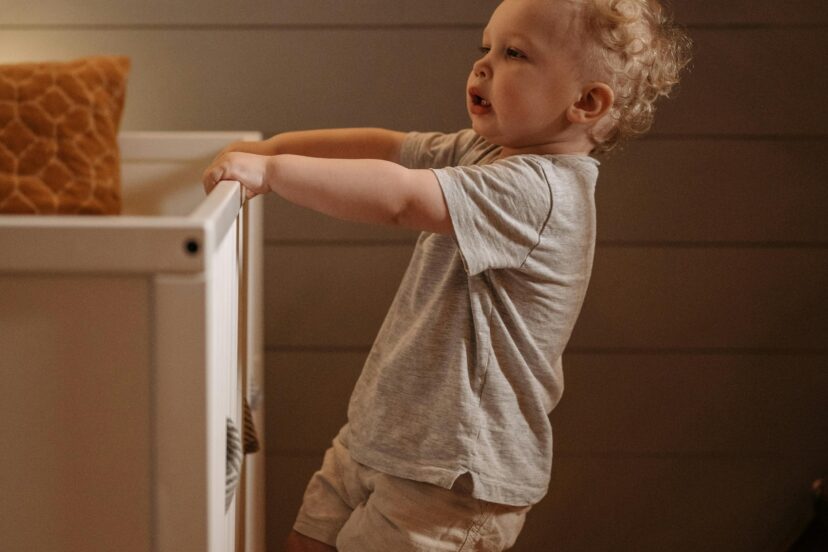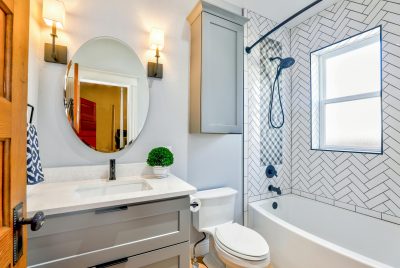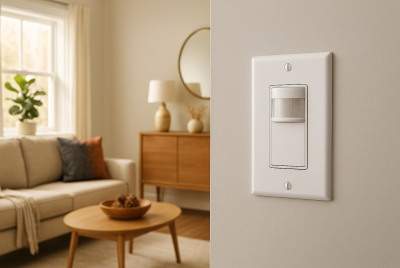5 Best Child Proof Cabinet Locks for a Safe and Secure Home
We may earn a commission for purchases made using our links. Please see our disclosure to learn more.
Curious little tots like to explore things at home they shouldn’t, and as a parent, it’s kind of frustrating. You constantly worry about whether they’ll have an accident or pull out cooking pans, so you keep an eye on them always. Their favorite to discover? Cabinets. Keep your little one safe by using child proof cabinet locks. No parent would be happy to see their toddler happily playing with cleaning supplies, right? Here are the top options you can consider to keep your tiny adventurer safe.
Why Do You Need Child Proof Cabinet Locks?
You left your toddler alone for two minutes to get something, and when you come back, you find them knee-deep in kitchen chaos. That’s frustrating! That’s why child proof cabinet locks are a must. They prevent accidents by keeping hazardous goods (cleaning chemicals, sharp objects, and small choking risks) out of reach. The best part is that they can give you, the parent, peace of mind. You don’t have to keep one eye on your toddler at all times to ensure they do not get into trouble. And, let’s be honest, they spare you from having to clean up mistakes that don’t need to be there. Now that we’ve established why these locks are necessary, let’s look for the best ones for your home!
1. Magnetic Cabinet Locks – Best Overall
Magnetic locks are the best option if you want a cabinet lock that is incredibly secure but almost invisible. Using a unique magnetic key, you can open these clever locks, which use powerful magnets to keep your cabinets securely closed. You don’t have to worry about unsightly plastic locks detracting from the aesthetics of your kitchen because they fit in perfectly with your cabinets. The sole drawback? You’ll be forced to search through drawers for the magnetic key if you lose it, so perhaps keep an extra somewhere secure. However, all things considered, they’re among the greatest solutions for preventing small hands from entering inappropriate areas.
2. Adhesive Strap Locks – Best for Quick Installation
Do you hate drilling holes in your cabinets? Me too! You’ve found your new best buddy in adhesive strap locks. With its powerful adhesive, they adhere directly to your cabinets, making installation quick and easy. Because of their extreme flexibility, these locks are suitable for drawers and cabinets alike. The only drawback is that the glue may eventually peel off, particularly if your child is the kind that is always tugging on things (which, let’s face it, they all do). However, these locks are a good option for a quick and damage-free fix.
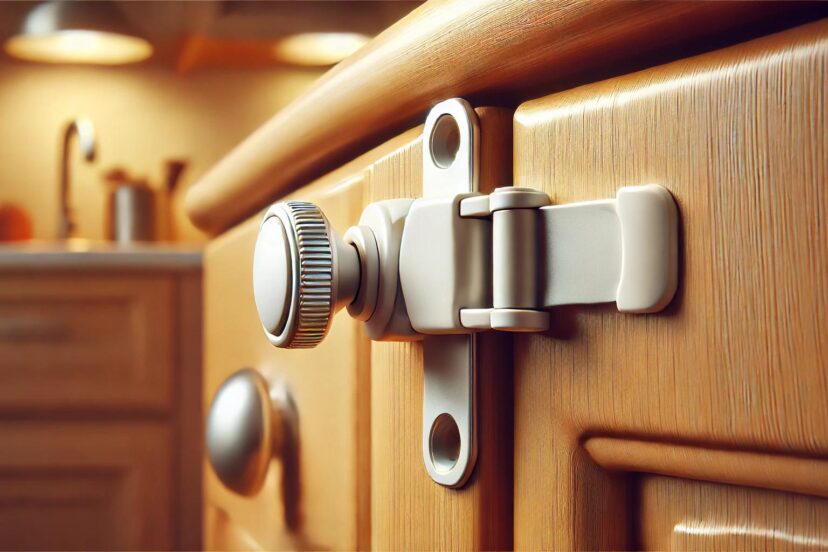
3. Sliding Cabinet Locks – Best for Double-Handled Cabinets
Sliding cabinet locks are a simple to use solution to keep your cabinets closed if they have two side-by-side knobs. In order to stop the handles from opening, these locks function by slipping a piece of plastic between them. A simple, fast fix that requires neither drilling nor glue. The drawback? They can be a little difficult for some adults to open, particularly if they’re pressed for time (think of attempting to get a snack while holding a squirming toddler). However, sliding locks are an excellent choice for a simple lock that doesn’t need to be installed.
4. Spring-Loaded Cabinet Locks – Best for Stubborn Toddlers
If your child has a knack for figuring things out (future engineer, perhaps?), you’ll want a lock that offers extra security. Spring-loaded cabinet locks are one of the toughest options because they require an adult to press a latch to open. These locks allow the cabinet door to open slightly before stopping, so you’ll need to push the latch down to open it all the way. They’re highly effective, but they do require drilling, which might not be ideal for renters. Also, some parents find them a little annoying to open multiple times a day. But if your child is determined to break into cabinets, these locks will make sure they stay out.
5. Cord Locks – Best for Unconventional Cabinets
Got cabinets with oddly shaped handles or unique knobs? Cord locks are a fantastic solution. These locks use an adjustable cord to wrap around cabinet handles, keeping them tightly secured. They’re easy to install and work on a variety of cabinet styles. The only downside is that they might not look as sleek as other options, and if not tightened properly, a determined toddler might figure out how to wiggle them loose. But if you’ve struggled to find a lock that works on your unconventional cabinets, cord locks are a great option. For more home improvement tips, check out this article about ways to maximize your outdoor space.
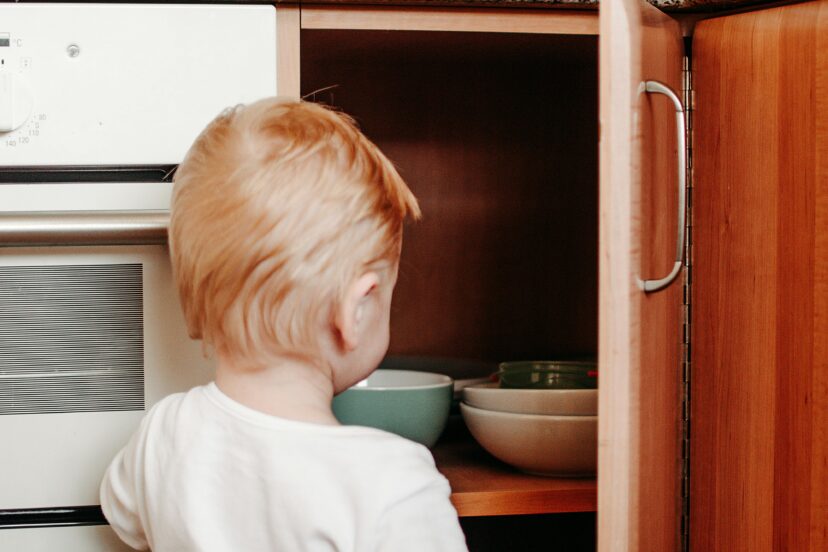
The Importance of Childproofing in Preventing Injuries
Research highlights the critical role of childproofing measures in reducing household injuries among young children. One study found that while parental supervision is essential, adding safety devices like cabinet locks provides an extra layer of protection, reducing the constant need for vigilance. Additionally, a randomized controlled trial on home safety demonstrated that properly installed safety devices significantly decreased medically attended injuries, reinforcing the effectiveness of childproofing solutions. These findings emphasize that a combination of education, proper installation, and consistent use of safety tools can make homes safer for toddlers.
How to Choose the Right Child Proof Cabinet Lock
Choosing the best child proof cabinet lock depends on a few things. First, think about your cabinet style—some locks work better on certain types of cabinets than others. Next, consider how much effort you want to put into installation. If you’d rather avoid drilling, go for adhesive or sliding locks. Also, take your child’s personality into account. If they’re extra curious and determined, you’ll need a stronger lock, like a spring-loaded one. Lastly, make sure the lock is easy for you to open because, let’s face it, you don’t want to struggle every time you need to grab a snack.
Must-Have Products for Child Safety
Looking for more ways to childproof your home? Here are some additional products that can help keep your little one safe:
- Childproof Door Knob Covers – Prevent kids from opening doors to unsafe areas.
- Edge and Corner Protectors – Soften sharp furniture corners to prevent bumps and bruises.
- Outlet Covers – Block unused electrical outlets to keep curious fingers safe.
- Baby Gates – Create safe play areas and keep toddlers out of dangerous zones.
- Furniture Straps – Secure heavy furniture to the wall to prevent tipping accidents.
Additional Childproofing Tips
Cabinet locks are great, but they’re just one piece of the childproofing puzzle. Here are a few more tips to keep your little one safe:
- Store dangerous items on high shelves whenever possible.
- Use outlet covers and baby gates to add extra security around the house.
- Keep an eye on your child because no lock is 100% foolproof (kids are clever!).
Summary
Finding the best child proof cabinet locks doesn’t have to be overwhelming. Whether you go with magnetic, adhesive, sliding, spring-loaded, or cord locks, each has its own strengths depending on your needs. Magnetic locks are sleek and secure, adhesive strap locks are quick to install, sliding locks are great for double handles, spring-loaded locks offer extra security, and cord locks work for tricky cabinet designs. Pick the one that fits your home best, and enjoy the peace of mind knowing your little explorer is safe!
FAQs
1. What is the most secure child proof cabinet lock?
Magnetic cabinet locks are one of the most secure because they’re hidden and require a special key to open.
2. Are adhesive cabinet locks strong enough?
Yes, but over time, the adhesive can weaken—especially with frequent use or moisture exposure. Keep an eye on them and replace when needed.
3. Can I remove cabinet locks without damaging my furniture?
Most adhesive and sliding locks can be removed without damage. However, drilled-in locks will leave holes, so consider that before installing them.
4. At what age should I stop using child proof cabinet locks?
Most parents stop using them when their child is old enough to understand safety rules—typically around 3 or 4 years old.
5. Do all child proof locks work on drawers as well?
Not all of them! Magnetic and adhesive strap locks usually work well on drawers, but sliding and cord locks are mainly for cabinets with handles.

